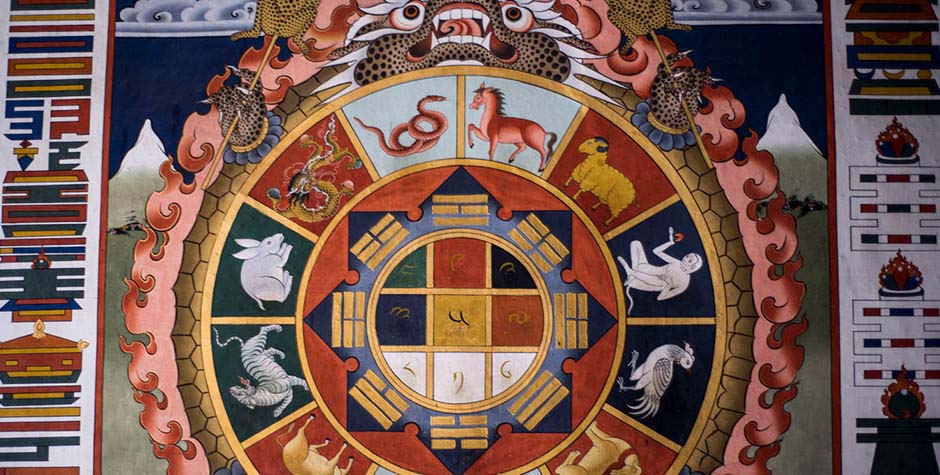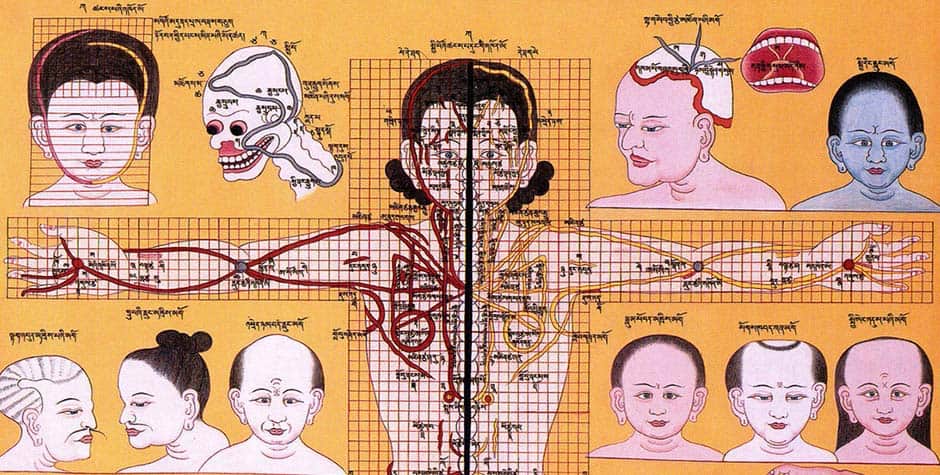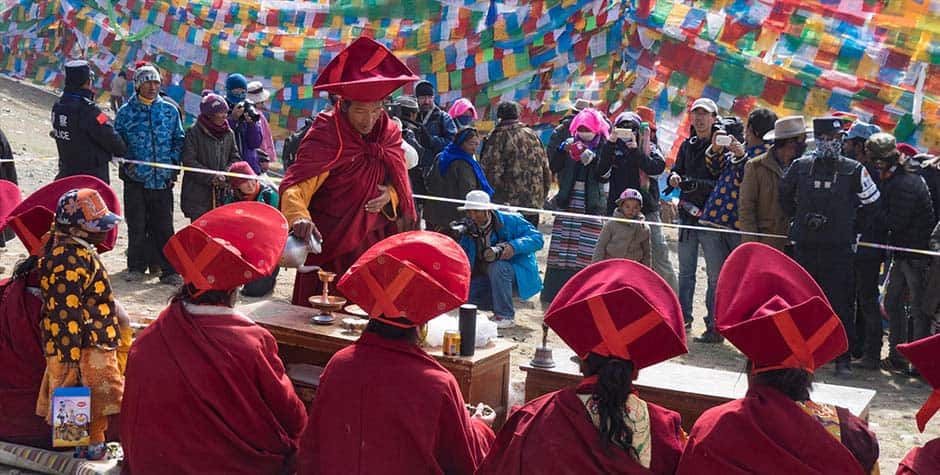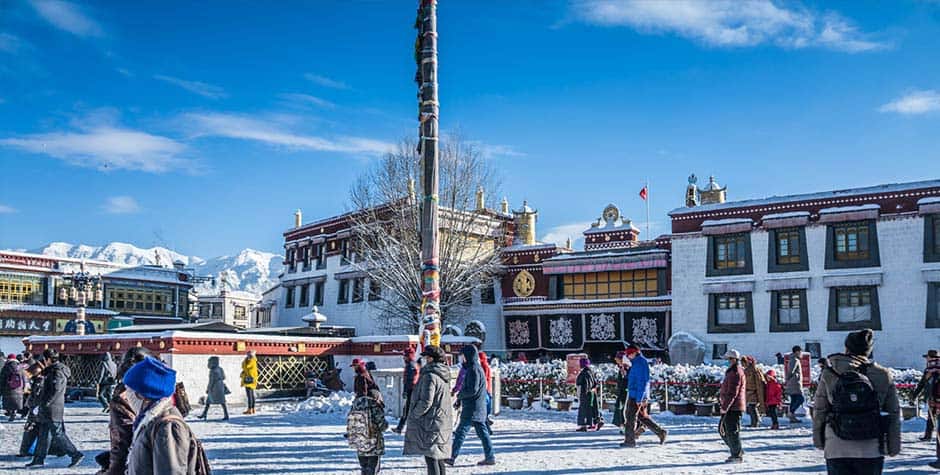This website refers to Tibet as the Tibet Autonomous Region of China. Therefore, all the information here directly relates to the area or is otherwise mentioned.
The Mysterious Buddhist kingdom of Tibet has been locked away for centuries, giving it a unique image of the West. Hence, Lhasa became the ultimate prize for adventurers, known as the ‘forbidden city.’
Tibet has different meanings for different people. For travellers and explorers, it is popular for its unique culture, tradition, and heavenly landscape. Similarly, it is a land steeped in Magic and Mystery for those on spiritual quests. And for traders, it is the land of treasures and riches.
In the mid-1980s, Tibet’s door finally opened for International travellers, making it no longer the hidden hermit kingdom that had intoxicated early Western travellers so much.

Due to its Geographical, Climatic, and Historical Conditions, we have a unique culture. There is a massive influence from neighbouring cultures, such as Buddhism from the Indian subcontinent, Food from the Han Chinese, and Clothing from the Mongols.
Tibetan Sky burial, Tibetan opera, Prayer flags, and Singing Bowl significantly contribute to world culture.

Shamanistic Bön Religion is the first and the Native religion of the region. With the introduction of Buddhism, it became the main religion. Tibetan Buddhism has four main sects: Gelugpa, Sakyapa, Kagyupa, and Nyingma.
In the 16th Century, a Muslim trader settled in Lhasa and set up a mosque. Consequently, we now have a considerable Muslim population here. Also, we have a Christian village with about 500 people in eastern Tibet.
Tibetan Astrology
For thousands of years, we have used astrology to understand our inner selves and outer atmosphere better. Therefore, it is deeply embedded in our daily lives and is the source of guidance for all major decisions.
We base all our major decisions on the Tibetan Astrology forecast from marriage to death.
Tibetan Medicine has a history of over 2500 years, making it one of the oldest medical systems in the World. In the Tibetan Language, our medical system is called Sowa Rigpa, Which Means the knowledge of healing.
This Medicine has excellent potential for accessing and treating patients because of predictive diagnoses, targeted prevention, and creating personalized medical treatment.
Most of our written history is concentrate on Buddhism. Therefore, when you visit us, you will only hear about Tibetan Buddhism and its legendary kings.
Our history begins with the marriage of Orgess with the monkey, which led to the introduction of Buddhism. The Tibetan kings follow, eventually peacefully merging into the People’s Republic of China.
Tibetans love festivals. There are almost a dozen festivals each year in Tibet. In fact, most of the festivals, such as the Yogurt Festival or the Saga Dawa Festival, are closely associate with Tibetan Buddhist culture.
Buddhist rituals, dance, songs, and other recreational activities are associate with the Tibetan festival, which has become an essential time for international travelers to visit the region.
Conclusion of Tibet: A Beginner’s Guide
We hope you enjoy reading the above post. With us, you can get the best Tibet travel information and Tibet tour service. For more reading on Tibet, visit our blog at Nomadic Tibet. Please do share.





